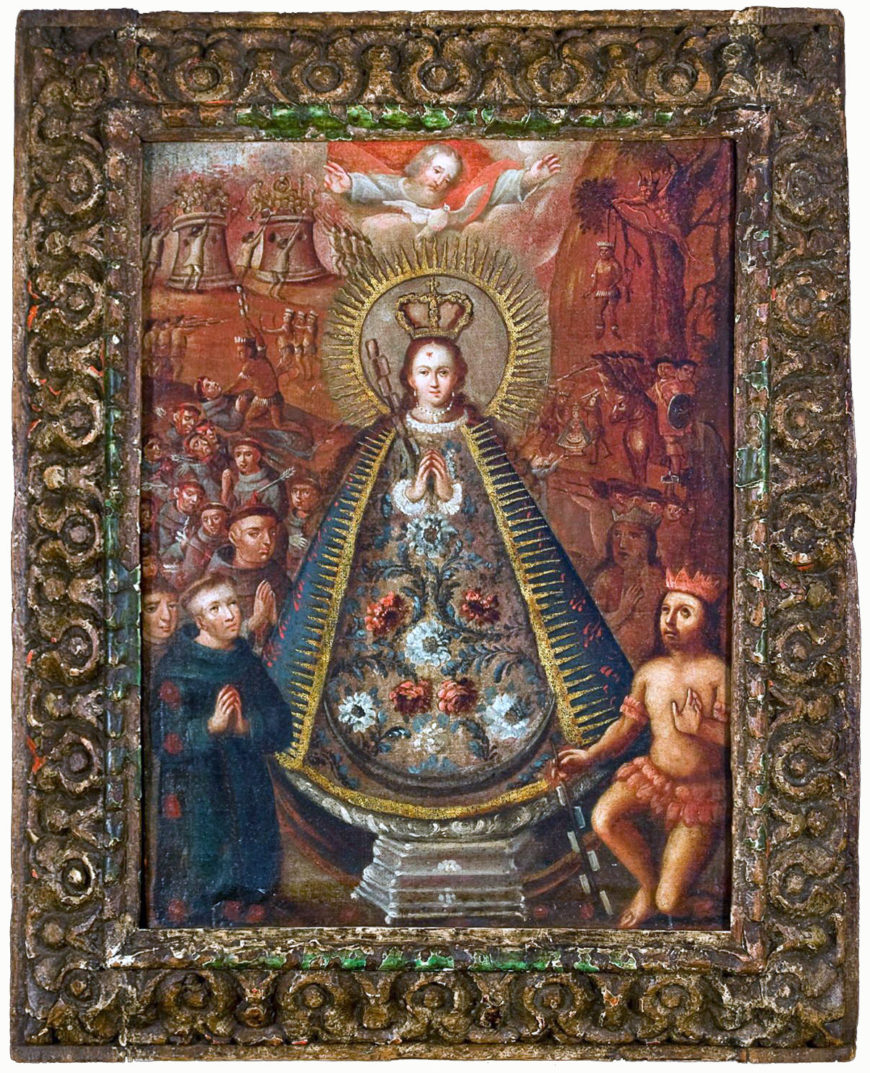The Virgin of the Macana

The Virgin of the Macana, second half of the 18th century, oil on canvas (History Collections New Mexico History Museum)
The Virgin of Macana painting is telling the story of the colonization of America and the Pueblo revolution. In tale of the statue, it begins with another statue, Our Lady of Toledo, which is struck on the head during a battle where a Native attempting to destroy it. After it is inexplicable survival, the statue transformed from Our Lady of Toledo into the Virgin of Macana. In the painting itself the indigenous people are attacking and killing the Franciscans. At the bottom of painting of the Virgin of Macana it even contains a resolution to the conflict. Both sides the Native people and the priests coming together are coming together to pay their respects to the statue. Thus, the individuals that died trying to spread the word of God were made into martyrs. The intended audience, of course are Christians based on the contain of the painting. The painting itself might not be historically accurate because of its content and the fact that there were no artists painting the revolution at the time. It was more than likely painted by a Christian wanting to reinforce the word of God and his power. Its is only a painting that is based on a tale or a retelling of a battle.
: Dr. Emmanuel Ortega, "The Virgin of the Macana and the Pueblo Revolution of 1680," in Smarthistory, October 16, 2020, accessed April 5, 2021, https://smarthistory.org/virgin-macana/.

Comments
Post a Comment